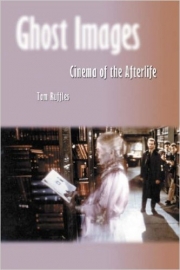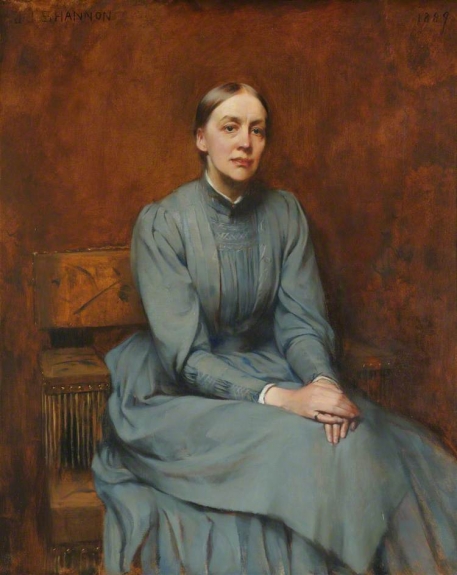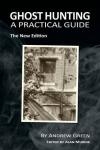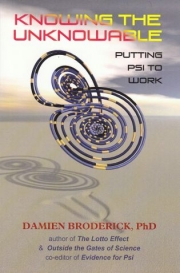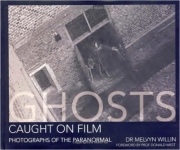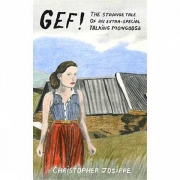The story of Gef the ‘talking mongoose’, or ‘the furry little enigma’ in Christopher Josiffe’s words, is surely one of the strangest in the annals of the paranormal. Enigma is an appropriate word because the entity identified as Gef defies categorisation. Something answering to that name cohabited with the Irving family – James, his wife Margaret and daughter Voirrey (Manx for Mary), born in 1918 – on the Isle of Man through the 1930s, but despite extensive documentation provided by Mr Irving, plus investigations by psychical researchers and copious quantities of newsprint devoted to the case, what he (or it) was continues to perplex.
At the time of Gef’s appearance (using the term loosely), the family had come down in the world. They had been prosperous prior to the First World War, living in Wavertree, Liverpool, where Irving made a very comfortable living as the representative of the Canada-based Dominion Organ and Piano Company. Unfortunately the war destroyed his business when substantial tariffs were imposed on the importation of luxury goods. After several abortive attempts at establishing himself in a different line of work, in 1916 he bought a farm on the Isle of Man at Doarlish Cashen (Cashen's Gap), outside the village of Dalby, an isolated spot two miles up a rough track some five miles south of Peel.
Irving paid £310 for the land and buildings but unfortunately the post-war slump in prices drove the family into poverty, and the son and older daughter, Gilbert and Elsie, left, leaving Irving, Margaret and Voirrey to manage as best they could. Josiffe makes much of this awkward state of affairs, cultured people living in circumstances at odds with their previous status. They had travelled to Canada, and mixed with a range of people while living in Wavertree, now they were stuck on marginal land barely scraping a living. The house had no electricity and no telephone, not even a radio, only a gramophone for entertainment. Books were not easy to come by so the evenings would have hung heavily. The psychological stresses of such narrowed social and financial horizons must have been enormous. Irving was even obliged to forgo membership of his Masonic Lodge as he could no long afford the fees.
As incomers they were noticeable, and would have stood out in other ways. Judging by the photographs, Margaret had a forbidding quality on account of her appearance, which was striking (in photographs she is seen wearing a choker, an unusual garment for a farmer even in her Sunday best). She was considered witch-like by the locals and herself thought she had psychic abilities. Voirrey was intelligent, but failed to fit in, other children seeing her as strange: smelling of livestock (though surely not unique on that account in a rural community) and roaming the hills on her own or with just the dog for company. Visitors to the farm noted she appeared unhappy, shy and passive, and uncomfortable in the presence of strangers.
In this unfavourable situation Gef, that weird talking creature, made his mischievous presence felt in September 1931. Elusive he may have been but it was obvious when he was around, mainly by his voice emanating from behind the wood panelling, but also by moving or hiding objects, and throwing stones. The voice was interactive, holding conversations, though on Gef’s terms and often using bad language, and he liked to sing along to the gramophone. Gef was hostile at first, particularly poking fun at Irving, but a rapprochement was eventually established and he became close to Voirrey, though the attachment faded as she reached womanhood and she tired of him. He could be irritable, for example calling Irving a ‘fat-headed gnome’ on one occasion, yet was affectionate at other times. Often he was very funny, for example when he referred to himself as ‘The eighth wonder of the world’, a description cribbed from King Kong, contrasting the pair somewhat in size and weight. He tried to be helpful, supplying the family with rabbits and offering racing tips, though he was not much of a tipster.
As if being a talking animal wasn’t strange enough, he would ramble the island, possessing the power of invisibility. On occasion he seemed to be in two places at once. He knew what was going on, claiming to eavesdrop, but there was evidence he had clairvoyant abilities, for example describing a bus driver’s first-floor flat, providing information which was found to be accurate. It is this type of anecdotal evidence that lifts the case from tall tale into the realm of psychical research, and while for most of this we only have the Irvings’ word for it, there were a number of independent witnesses to Gef’s abilities. Whereas one might have expected the hard-headed businessman to pooh-pooh the notion of a talking mongoose, on the contrary Irving became obsessed, keeping a detailed diary of Gef’s (alleged) doings.
Word got around, the local papers picked the story up as the 'Dalby Sensation', it then made the English press, and thus the fame of the ‘Dalby spook’ spread. During the winter of 1932 the news reached psychical researcher Harry Price, who first dispatched Harold Dennis, a member of his National Laboratory of Psychical Research, to do a recce. Dennis made three visits, on one of which he heard Gef describe his clothes from behind the wainscoting, when Mr and Mrs Irving were in view and with Voirrey visible through the window 100 yards away feeding the hens.
Price then came with his collaborator Richard Lambert, editor of the Listener. Contrary to what might be assumed, Price’s informant was not Irving but another resident. Later, occultist Ahmed Rollo, author of the 1937 autobiography I Rise: The Life Story of a Negro visited, as did psychical researcher and psychoanalyst Nandor Fodor, then research officer for the International Institute for Psychical Research. Fodor initially thought Gef really was a talking animal, but later decided he had been an unconscious psychological projection by Irving’s mind.
Price is firmly linked to Gef, but his involvement was less than might be expected. Even so, he does not come out of the story very well. He wrote The Haunting of Cashen’s Gap with Lambert and initially he was going to give the financially strapped Irving a third share of the profits, but reneged and sent a tenner with a copy of the book instead, arguing that should Irving actually make money from Gef, it would dent his credibility, and anyway the book was going to make a loss for the publisher. Irving rightly felt he had been exploited and fleeced, and the pitch queered for any further book by himself. Gef had his own, typically forthright, view: “I like Captain Dennis, but not Harry Price. He’s the man who puts the kybosh on the spirits!”
Motives are hard to fathom with the Irvings. They appeared to be as much annoyed by the attention as courting it. Irving expressed dissatisfaction with the numbers of casual visitors he was receiving, to the extent of putting a notice in the newspaper to discourage callers, but perhaps he protested too much. The attention must have made a welcome break from the tediousness of running the farm and brought him into contact with people of a similar social class. Gef could have represented an adventurous alter ego for a man who had come down in the world and lived a life the epitome of dullness. We are frequently told Irving had a ‘smattering’ of languages, but the extent is never made clear. He comes across as a man desperate to show he was more cultured than his neighbours. Gef too apparently spoke foreign languages, though his ‘Hindustani’ was suspect.
Unfortunately Gef never made himself available when visitors came to see him, and was averse to having a decent photograph taken, leaving only ambiguously blurry snapshots. Fur samples were found to come from the dog, and paw prints were inconclusive (though they look faked).* Without concrete evidence Gef is impossible to pin down and Josiffe considers various interpretations. Perhaps Gef was a cryptid (in passing we learn quite a lot about the small fauna of the island). He ate, though he was fussy, and Margaret reported putting her finger in his mouth; such events support his materiality. Oddly enough, in 1912 mongooses had been imported locally to control rabbits, so the presence of a mongoose on the Isle of Man was not as peculiar as it sounds, and though there was some doubt whether they would be able to survive the winters on the island, there have been reports of sightings in the years since.
On the other hand perhaps he was an earthbound spirit masquerading as a small mammal. Even before Gef’s arrival the place had a reputation for spookiness, and two men Irving hired to make improvements after he bought it refused to stay overnight. Or he could have been a poltergeist manifestation: unhappy, lonely Voirrey would be the classic focus, externalising her dissatisfaction with her life. His name was pronounced ‘Jeff’, but he was originally called Jack; he said he preferred to be called Gef, and Josiffe notes that Geoffrey crops up in other poltergeist cases, notably Epworth parsonage and Willington mill.
Could be have been a subconscious projection by Irving, as Fodor thought, or by Voirrey? Irving was domineering, and insisted on being the only one to discuss Gef, keeping wife and daughter firmly in the shade. When Harry Price suggested taking Voirrey for a tour of the island in a car he assumed a sexual advance was being made. ‘If Harry Price wanted a girl, he should look for one elsewhere,’ he snapped. The degree of his over-protectiveness towards Voirrey has raised the suggestion of sexual abuse, and while Josiffe indicates that there is no evidence of molestation, could Gef have been a valve to allow the escape of his Freudian feelings for her, or the stresses Voirrey felt as a result?
In addition to such speculations, Josiffe tries for size ideas as varied as that of the fairy, the witch’s familiar, the trickster, the tulpa – thought form – and shape-shifter, in an effort to pin the slippery little tyke down. Once one begins discussing talking animals with clairvoyant abilities nothing can be ruled out of court. Naturally he considers in detail the possibility of a hoax by one, two or all three: by Voirrey alone, because she was unhappy and it livened things up while allowing her to vent her frustrations (but she clearly disliked the attention it brought); by Margaret and Voirrey, to persuade Irving to move somewhere more congenial (unlikely to succeed, a lot of work for an uncertain return, and they were aware that Gef’s presence was devaluing the property, plus Irving claimed to have heard Gef speak when he was alone); or by all three to try to ameliorate their miserable existence (but Irving was genuinely invested in Gef’s reality and the enterprise risked heaping ridicule on their heads). There is limited evidence for all these possibilities, but it is improbable a hoax not involving all three could have lasted so long. Josiffe considers a folie à plusieurs, but then what about the independent witnesses? He presents the possibilities – some more plausible than others – but ultimately stresses that no single one provides a satisfactory explanation.
Gef was no help, describing himself in contradictory terms. He referred to himself as an earthbound spirit, and on one occasion, when chided by Margaret, as the Holy Ghost. Then again he declared: ‘I am not a spirit. I am a little extra, extra clever mongoose’, yet ‘I am a ghost in the form of a weasel (the type of animal he was initially considered to be), and I shall haunt you with weird noises and clanking chains.’ Later he said he was a marsh mongoose from India: ‘I was born near Delhi, India, on June 7, 1852’, travelling to the Isle of Man via Egypt, a suitably exotic background. The Isle of Man is actually an appropriate location for Gef, with its in-between geographical location, its sense of remoteness and mystery, despite its proximity to two larger islands, just as Gef is some kind of in-between entity. He refused to be pinned down, physically or ontologically. When a South African Spiritualist visited she said ‘come here. Gef, I want you’, to which the reply was: ‘No damned fear! You‟ll put me in a bottle!’ He told Margaret she would never know what he was, a promise he kept.
As the 1930s progressed, Gef’s periods of residence at the house became less and less frequent, until he disappeared altogether. With the war, there were more important things to think about than the existence of a mongoose, chatty or not. Voirrey, now an adult, moved to Douglas to do war work, returning only at weekends and eventually moving to Cheltenham with the same company. Irving died in 1945, and the farm was sold, at a significant loss. Margaret moved to Peel, where she died in 1960. Voirrey died in 2005. There were no reports of Gef communicating with later inhabitants of Doarlish Cashen, and it seems he did not follow Margaret or Voirrey to their new homes. Perhaps the dispersal of the family reduced the amount of energy required for him to manifest.
A claim that an animal killed on the property in 1947 was Gef fails to convince, partly because it was much larger than the Irvings claimed Gef to be (about the size of a rat), partly because the photographed dead body feels so banal compared to Gef’s vitality and flamboyance. Despite numerous requests from journalists Voirrey only ever gave one interview, to Fate magazine, which was published in the July 1970 issue, but that did not clarify matters. She did though say she wished Gef had left them alone. There is a hint she blamed her father for creating the attention, ‘he just had to tell people about it’, something she found difficult to cope with because of her shyness (misconstrued in her youth as ‘aloofness’).
Josiffe has examined a wide range of sources, including the Harry Price archive at Senate House, and the SPR’s Gef file. He visited the site where the house stood and talked to anyone he could find with a connection to the case. One may conclude he has over-analysed a preposterously silly story in 400 pages that took seven years to research and write, but it is a complex tale with subtle ramifications, and Josiffe has produced what will surely remain the definitive account. ‘If you knew what I know, you'd know a hell of a lot!’, Gef boasted. And he was right, we would have the solution in our hands. There are no solutions here, but the journey Josiffe takes us on is a fascinating and entertaining one. The book, published by Strange Attractor Press, is beautifully produced and lavishly illustrated, though the cover artwork is surprisingly amateurish. Don’t’ let that put you off.
Information on the book, with further information about Gef, can be found on Christopher Josiffe’s Gef website:
https://gefmongoose.co.uk/
A separate review of Gef! will appear in the SPR’s Journal.
*The fur samples were sent to F Martin Duncan, a zoologist at London Zoo, for analysis. In a series of connections linking back to the SPR, Duncan worked with Anglo-American film entrepreneur Charles Urban on nature documentaries, Urban worked with film pioneer George Albert Smith on the development of the two-colour film process Kinemacolor, and Smith had earlier worked with SPR founder Edmund Gurney, participating in experiments and acting as his secretary.
